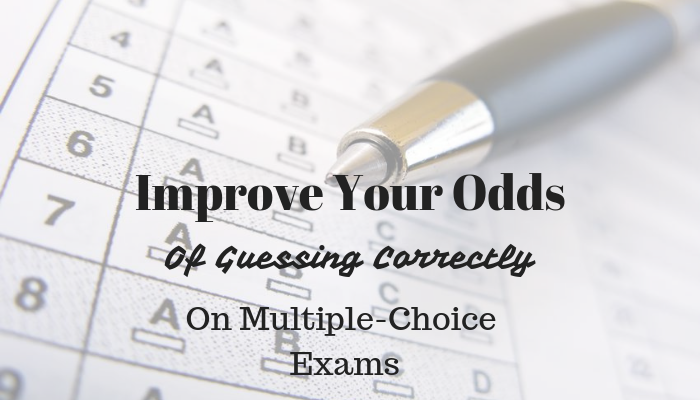In a perfect world, you could solve every question on the exam, or at least come up with a reasonable estimate.
In reality, there will be at least one question that stumps you.
Let’s say you get to the end of the exam and are frustrated that you don’t know the answers to 5 questions.
What do you do? Guess “C” for all of them?
Nope – it’s time to graduate from our high school test-taking strategies. Let’s put that analytical mind to good use.
A system to guess intelligently
We’ll use Exam FM as an example, but this applies for any multiple-choice CBT (computer-based testing) actuarial exam.
Let’s start with the basic facts about the exam:
- 35 Questions
- 5 answer choices per question (A, B, C, D or E)
Now let’s introduce the key assumption: on a computer-generated exam, the answers should be (approximately) spread evenly across those answer choices.
On a 35-question exam, this means you would expect 7 responses for each of the 5 answer choices.
NOTE: The SOA and Prometric have never confirmed (to our knowledge) that the answers are supposed to be evenly distributed. But if you’re designing a computer testing software to randomly assign answer choices, that’s the most logical way to do it, with some amount of variability.
Let’s say you’re at the end of the exam. You’ve answered 30 questions and need to guess on the last 5. Out of the questions you’ve completed, tally up how many times you marked each answer choice. For example:
| Answer Choice | # of Responses |
| A | 6 |
| B | 9 |
| C | 6 |
| D | 7 |
| E | 2 (!!!) |
You’ve only answered E twice, when you would expect to see 7 E’s. For the remaining questions, guess E for all of them.
One of my professors told me this system in college and it blew my mind. If you’re completely guessing on 5 questions, you would expect to get 1 correct just by chance. But with the system above, you can increase your odds.
When one question can make the difference between passing or retaking the exam (another $200 + a hundred hours of studying), you should take any advantage you can get.
Notes on using this guessing system
1. It should be used as a last resort.
If you have any reasonable guess (e.g. eliminating 2 answers as being unreasonable), go with your estimate. Reserve this guessing method for the questions where you are completely in the dark.
2. Don’t use this method to revise previous answers, just to fill in the gaps at the end.
If you see that you’ve already marked 10 A’s (instead of the expected 7), don’t second-guess yourself. It doesn’t mean you’re wrong – there will be variability in the distribution of answer choices. Always go with the answer you solved for rather than a guessing strategy.
3. Save 2-3 minutes at the end of the exam to tally up your answers and follow the process above.
It doesn’t take long, but it has the chance to get you an extra point or two.
This isn’t a magic fix. Again, we’re making a big assumption about answers being evenly distributed across the answer choices (with unknown variability).
But at the end of the day, it can’t be worse than the “always choose C” method.
Study Smart, Pass Fast, Live Life
Mike & Roy

